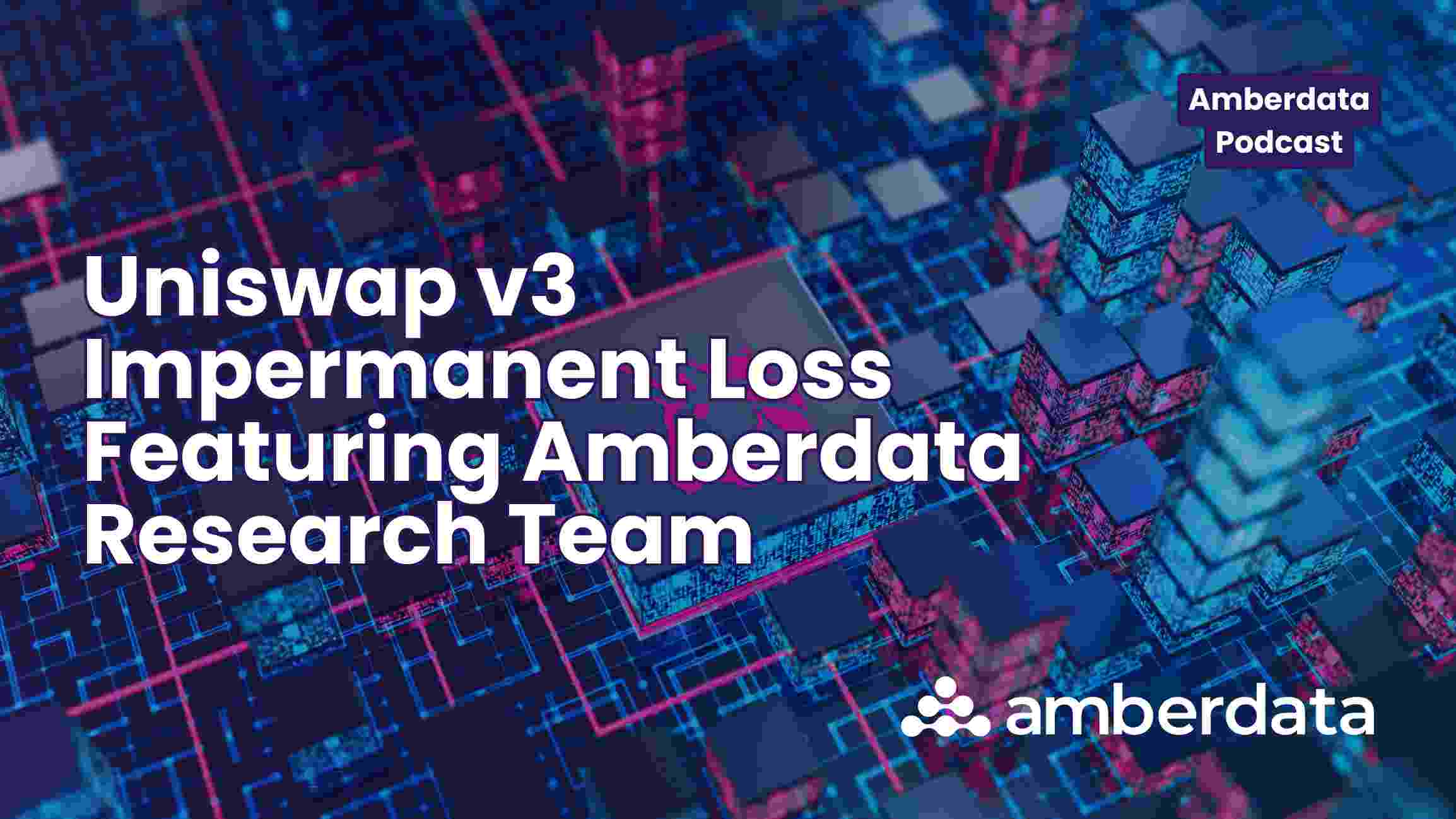Discussion of Uniswap v3 for Liquidity Providers Featuring Amberdata Research Team

Welcome to the Amberdata Podcast! Join Amberdata's Director of Research, Chris Martin, and the Amberdata research team, Pat Doyle and Christian Manaog, as they dive into the nuances of Uniswap v2, v3, and the upcoming v4.
Explore the differences in liquidity management, impermanent loss, and innovative features like Uniswap hooks, providing insights for liquidity providers navigating various pool types, including stablecoin pools. Gain a deeper understanding of LP strategies, risk assessment, and the scale of decentralized exchanges (DEXs).
Introduction to the Amberdata Podcast
The Amberdata Podcast, hosted by Director of Research, Chris Martin and featuring insights from the research team including Pat Doyle and Christian Manaog, offers a deep dive into the world of cryptocurrency and decentralized finance (DeFi). In this podcast episode, we'll explore topics such as Uniswap versions, LP strategies, impermanent loss considerations, and technical insights for liquidity providers.
Understanding Uniswap Versions
Uniswap, a leading decentralized exchange (DEX), has evolved from its v2 to v3 versions. Uniswap v2 pioneered automated market makers (AMMs) using a constant product formula to determine token prices. However, Uniswap v3 introduced concentrated liquidity ranges, allowing liquidity providers to define specific price ranges for their liquidity, addressing inefficiencies and reducing slippage. Uniswap v4 is anticipated to offer even more control to liquidity providers with features like customizable liquidity range tick spacing and Uniswap hooks for additional functionalities.
Navigating Impermanent Loss
Impermanent loss is a critical consideration for liquidity providers, occurring when the value of assets held in a liquidity pool deviates from their individual values, impacting profitability. Christian Manaog highlights the complexity of impermanent loss calculations due to crypto data opacity. LPs must understand impermanent loss to make informed decisions about liquidity provision.
Strategies for Different Pool Types
Stablecoin Pools
Stablecoin pools, featuring stable asset pairs like USDC/USDT, offer lower impermanent loss risks due to minimal price fluctuations. LPs focus on generating fees passively, leveraging stable asset prices. Factors like stability mechanisms of stablecoins and whale address movements influence LP risk assessment.
High Liquidity Pools
High liquidity pools, such as BTC/ETH pairs, face higher impermanent loss risks due to asset volatility. LPs adjust tick ranges based on asset price convictions and actively rebalance portfolios to mitigate impermanent loss.
Volatile or Memecoin Pools
Pools with volatile or meme coins experience heightened impermanent loss risks due to rapid price fluctuations. LPs expand liquidity tick ranges to accommodate unpredictable price movements and minimize unused liquidity risk.
Technical Insights and Considerations
Technical details discussed include:
-
Uniswap v3 Features: Concentrated liquidity ranges, customizable tick spacing, and Uniswap hooks for additional functionalities.
-
Impermanent Loss Calculation: Complex calculations due to opaque crypto data, emphasize the need for LPs to understand impermanent loss dynamics.
-
Pool Dynamics: Factors like asset stability, price volatility, whale movements, and LP convictions influence liquidity provision strategies.
Conclusion
The Amberdata Podcast episode offers valuable insights into navigating liquidity provision in decentralized finance. LPs are advised to understand impermanent loss dynamics and consider various factors when formulating liquidity provision strategies across different pool types. Technical insights provide a deeper understanding of liquidity pool dynamics, empowering LPs to optimize their strategies for profitability in the evolving DeFi landscape.
Disclaimer: This podcast is for educational purposes only. Nothing here is trading advice or solicitation.
For high-quality, granular data feeds reach out to hello@amberdata.io to inquire about our API solution and analytics platform.
Amberdata
Amberdata is the leading provider of global financial infrastructure for digital assets. Our institutional-grade solutions deliver data, analytics and comprehensive tools and insights that empower financial institutions to research, trade, and manage risk and compliance in digital assets. Amberdata serves as a...
